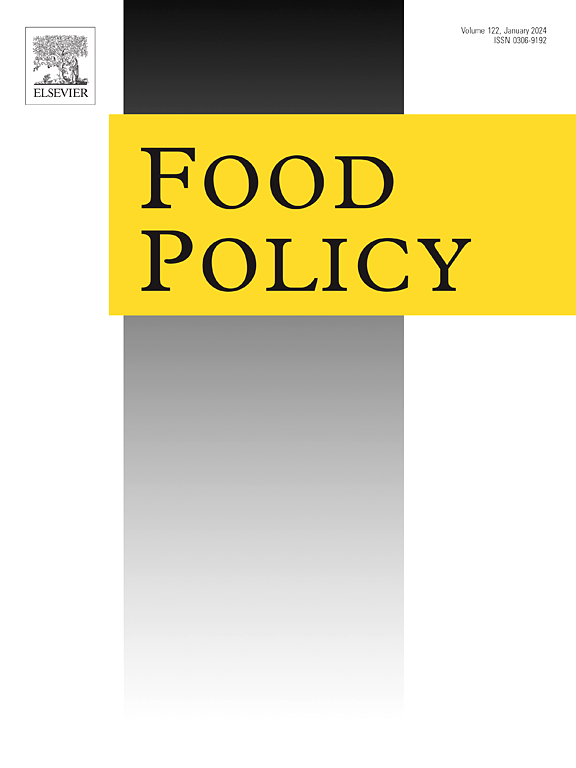Do color-coded Nutrition Facts Panels nudge the use of nutrition information?
IF 6.8
1区 经济学
Q1 AGRICULTURAL ECONOMICS & POLICY
引用次数: 0
Abstract
Nutrition Facts labels or Nutrition Facts Panel(s) (NFP) are a critical channel for communicating food nutrition information to consumers. A fundamental question is how to help consumers effectively understand and use the label without missing important information. This paper introduces a color-coded NFP and investigates its impacts on information search and consumer behavior, such as attention to information, food choice, and food health perception. Results show that the color-coded NFP attracts more attention than a black-and-white NFP, specifically for nutrients such as fat, sodium, and sugars, which should be limited. Additionally, the color-coded NFP made it easier for consumers to make food purchase decisions and led consumers to make healthier choices for some products (e.g., chips). Finally, the color-coded NFP reduces the time needed and contributes to a more accurate evaluation of the products’ healthiness in the case of chips, reducing the information processing costs and increasing the utilization of information. Our research demonstrates that the color-coded NFP is more attractive, efficient, and effective in delivering nutrition information and contributes to a healthier decision for some products (e.g., chips) than the traditional NFP.
彩色编码的营养成分表是否会促进营养信息的使用?
营养成分标签或营养成分面板(NFP)是向消费者传达食品营养信息的重要渠道。一个基本问题是如何帮助消费者有效地理解和使用标签,同时又不遗漏重要信息。本文介绍了彩色编码 NFP,并研究了它对信息搜索和消费者行为的影响,如对信息的关注、食品选择和食品健康认知。结果表明,彩色编码的营养信息提示符比黑白编码的营养信息提示符更能吸引消费者的注意,特别是对脂肪、钠和糖等营养成分的注意,因为这些营养成分是应该限制的。此外,色标国家食品标签使消费者更容易做出购买食品的决定,并引导消费者对某些产品(如薯片)做出更健康的选择。最后,就薯片而言,色标 NFP 减少了所需时间,有助于更准确地评估产品的健康程度,降低了信息处理成本,提高了信息利用率。我们的研究表明,与传统的营养信息提示器相比,彩色编码营养信息提示器在提供营养信息方面更具吸引力、效率更高、效果更好,有助于人们对某些产品(如薯片)做出更健康的决定。
本文章由计算机程序翻译,如有差异,请以英文原文为准。
求助全文
约1分钟内获得全文
求助全文
来源期刊

Food Policy
管理科学-农业经济与政策
CiteScore
11.40
自引率
4.60%
发文量
128
审稿时长
62 days
期刊介绍:
Food Policy is a multidisciplinary journal publishing original research and novel evidence on issues in the formulation, implementation, and evaluation of policies for the food sector in developing, transition, and advanced economies.
Our main focus is on the economic and social aspect of food policy, and we prioritize empirical studies informing international food policy debates. Provided that articles make a clear and explicit contribution to food policy debates of international interest, we consider papers from any of the social sciences. Papers from other disciplines (e.g., law) will be considered only if they provide a key policy contribution, and are written in a style which is accessible to a social science readership.
 求助内容:
求助内容: 应助结果提醒方式:
应助结果提醒方式:


